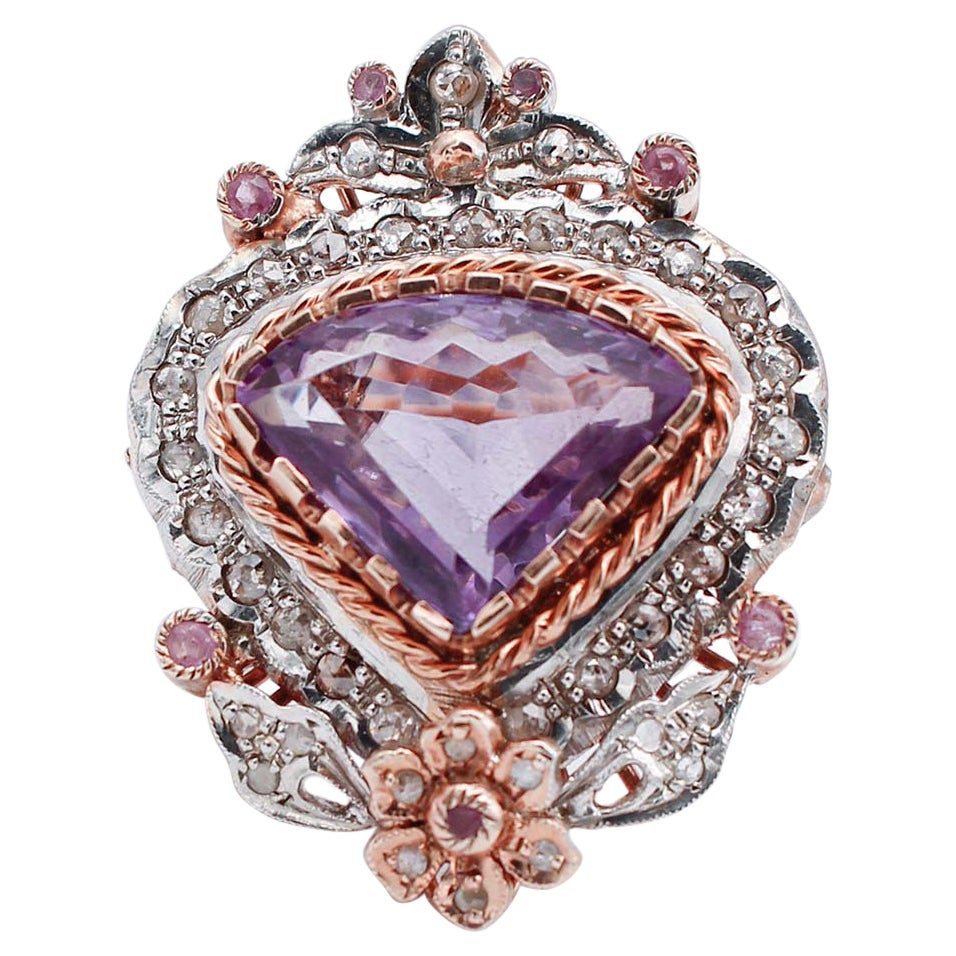

Amethysts also lend themselves well to the briolette cut, and bunching them together can create the impression of hanging grapes. Hexagon cuts in sleek, clean settings have come to the fore, a look that’s both bold and minimalist. She enjoys mixing it with emeralds or citrines, declaring this “a magnificent color code.” Bulgari, too, has gone for the emerald and citrine combination with amethyst, as well as matching it with turquoise. French designer Lydia Courteille likes to use amethyst to add strong contrast and vibrant color to her eclectic pieces. Bright, mood-boosting jewels in clashing, mismatched hues are very much in vogue. Purple Glamįrom very light shades to deep, saturated purple, amethyst offers jewelers an extensive color palette. Goshwara bracelet in 18-karat yellow gold with round sugarloaf amethysts and diamonds. “China has consumed a large amount of commercial material for beads and carvings, as well as geodes produced in southern Brazil and Uruguay,” he adds. The US consumes large amounts of Brazilian and Zambian amethysts of all qualities, according to Sabbagh, whereas Europe has considerable demand for higher-priced stones. Major markets for amethyst include the US, Europe, Australia, New Zealand and Japan. That said, amethyst from responsible sources may command higher prices due to higher production costs.


“The most excitement we see is when we find a big bright stone that is supersaturated.” Factors such as color, clarity, size and a “velvety” appearance are usually what determine the price of an amethyst, as opposed to origin.
RUSSIAN AMETHYST PRICE FREE
“Generally speaking, amethyst is quite free of inclusions by the nature of the crystal, so finding clean stones is not very difficult,” comments Thomeier. It still sells, because it is available, well known, affordable and a birthstone.” It has other advantages as well.
RUSSIAN AMETHYST PRICE TV
“In the US, TV stations sold millions of carats in the 2000s, but seem to have saturated that market. I would love to see amethyst become more popular again, but on the broader market, it is not a ‘hot’ gem variety.” Much of today’s demand comes from lower-priced jewelry, according to Braunwart. “Amethyst is selling, but not like it was 10 years ago…. But overall demand for the stone is “muted,” he reports. Indeed, a resurgence of pastel shades in the US market is pushing up sales of lighter-colored amethysts, says Eric Braunwart, founder of Columbia Gem House. He has seen consistent interest in the stone, in all qualities. With Pantone’s announcement of “Very Peri” as its 2022 color of the year - encompassing shades of blue and a violet-red undertone - the demand for amethyst will likely rise, believes Clement Sabbagh of Brazilian gemstone specialist Ben Sabbagh Bros. Montana amethyst from Columbia Gem House. Other notable sources include Rwanda, India, Morocco, Arizona and Montana, with limited production in Sri Lanka, Burma and Russia. The most prolific primary deposits today are in Uruguay, Zambia and southern Brazil. “With a distinctive red secondary hue, is truly luminous and has a richness to it that makes it very desirable,” says Sara Thomeier, head of jewelry for the Americas at auction house Phillips. The first known amethyst mines were discovered in the 18th century in Russia and Brazil, with Russian specimens being the most prized for their deep “imperial” purple. Today, esoterica adherents believe the calming February birthstone possesses a tranquilizing energy, clearing the mind and relieving stress. For this reason, these gems were often studded or carved into goblets as protection against intoxication and to stave off evil spells.

Legend has it that the semiprecious quartz got its name from the nymph Amethyste, who came under the wrath of Bacchus, the god of wine. In ancient times, it was considered as valuable as ruby and emerald, and it has associations with mythology, Saint Valentine and high-ranking clerics of the Catholic church. This widespread violet gem continues to dazzle and is a perfect fit for this year’s Pantone color.Īmethyst is arguably one of the most distinctive and ubiquitous gemstones in decorative jewelry.


 0 kommentar(er)
0 kommentar(er)
